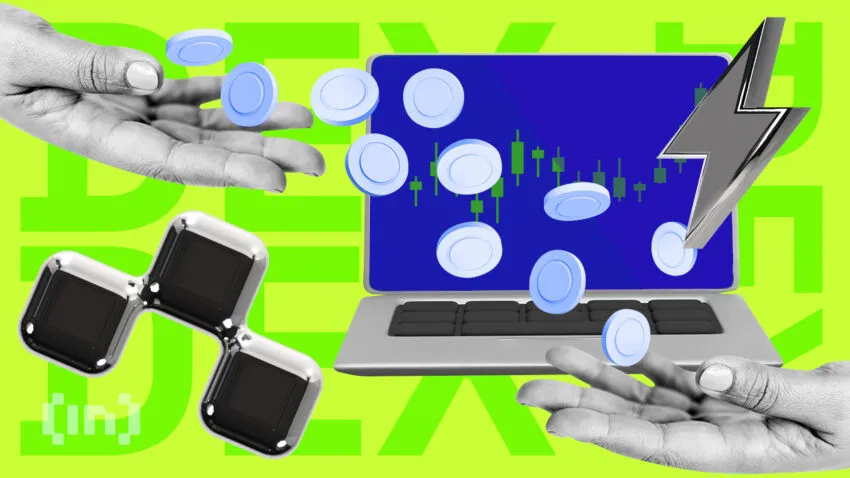Decentralized finance (DeFi) has rapidly gained popularity in recent years, with more and more investors turning to the space to diversify their portfolios and earn passive income. One of the most popular ways to earn rewards in DeFi is through liquidity mining, a process that involves users providing liquidity to DeFi protocols in exchange for rewards.
1inch and Polygon Partnership
Recently, 1inch, the decentralized exchange aggregator, announced a new liquidity mining program on Polygon, the Layer 2 scaling solution for Ethereum. While this program has gained attention, it’s important to understand what liquidity mining is and its benefits and drawbacks.
What is Liquidity Mining?
Liquidity mining involves depositing cryptocurrencies into a DeFi platform’s liquidity pool. The cryptocurrency is then used to facilitate trades on the platform, generating transaction fees. In exchange for depositing liquidity, users receive rewards in the form of the platform’s native tokens.
Benefits of Liquidity Mining
One of the main benefits of liquidity mining is the potential to earn high yields on cryptocurrency holdings. For instance, some DeFi protocols offer double-digit yields to liquidity providers, far higher than the yields offered by traditional savings accounts. In addition, liquidity mining can also provide users with exposure to new tokens, which can increase in value over time.
Moreover, liquidity mining incentivizes users to contribute to the growth and development of DeFi protocols. By providing liquidity, users help to ensure that the protocol is able to process trades and attract new users. In turn, this can increase the value of the protocol’s native token, benefiting all liquidity providers.
Drawbacks of Liquidity Mining
While liquidity mining has many benefits, there are also drawbacks to consider. One of the most significant is the potential risk of impermanent loss. Impermanent loss occurs when the price of the tokens in the liquidity pool changes, resulting in a loss of value for the liquidity provider. For example, if the price of one token in the pool increases, while the price of the other token decreases, the liquidity provider may end up with fewer tokens overall than when they were first deposited.
Another drawback of liquidity mining is the complexity of the process. Setting up a liquidity pool and monitoring it requires technical knowledge, which may be a barrier to entry for some users. Additionally, liquidity mining can be time-consuming, requiring users to constantly monitor their investments and make adjustments as necessary.
Players in the Liquidity Market
1inch is not the only player in the liquidity mining space. Other popular platforms include Uniswap, SushiSwap, Curve, and Balancer. Each platform offers different approaches to liquidity mining and has its own pros and cons.
Uniswap
Uniswap is a decentralized exchange protocol that enables users to swap tokens without intermediaries. Launched in November 2018, Uniswap was one of the first decentralized exchanges to gain significant traction in the DeFi space. The platform is built on top of the Ethereum blockchain and utilizes an automated market maker (AMM) mechanism to determine token prices.
SushiSwap
SushiSwap is another decentralized exchange that was created as a fork of Uniswap in August 2020. It aims to improve upon the original Uniswap model by introducing additional features, such as a governance token and incentives for liquidity providers.
Balancer
Balancer is a non-custodial portfolio manager and decentralized exchange protocol that allows users to create and trade custom token baskets. Launched in March 2020, Balancer is designed to provide more flexibility and customization options for traders and liquidity providers. It uses a multi-token automated market maker (AMM) mechanism to determine token prices and allows for the creation of custom liquidity pools.
Curve
Curve launched in 2020 as a decentralized exchange. And with the goal of providing a more efficient and cost-effective way to exchange stablecoins.
Unlike other decentralized exchanges, Curve focuses exclusively on stablecoins, which are cryptocurrencies that are pegged to the value of traditional fiat currencies like the US dollar or the euro. This allows for more stable trading pairs and reduces the risk of price fluctuations.
One of the key features of Curve is its unique bonding curve algorithm, which is designed to ensure that the price of stablecoins remains stable even as trading volume fluctuates. This algorithm allows for more efficient trades with less slippage, which is a common issue on other decentralized exchanges.
Curve also offers liquidity providers a way to earn passive income by providing liquidity to the platform. Curve platform awards CRV tokens, its native cryptocurrency, to liquidity providers in exchange for the liquidity they provide.
Another advantage of Curve is its low fees, which are typically much lower than those charged by centralized exchanges. This makes it an attractive option for users who are looking to minimize their trading costs.
However, like any other decentralized exchange, Curve is not without its challenges. One of the main challenges is the issue of liquidity. Finding liquidity for some trading pairs can be difficult on Curve as it focuses exclusively on stablecoins. This results in higher trading fees and slippage.
Curve lags behind Uniswap in trading volume and liquidity despite its significant growth.
1inch
1inch is a decentralized exchange (DEX) aggregator that helps users find the best prices for trades across multiple DEXs. Launched in 2019, 1inch has quickly become one of the most popular DEX aggregators in the DeFi space.
One of the key features of 1inch is its smart routing technology, which automatically splits orders across multiple DEXs to ensure that users get the best price for their trades. This technology also helps to reduce slippage, which is the difference between the expected price of a trade and the actual price that is received.
The intuitive and user-friendly interface of 1inch also enables users to navigate and find the best prices for their trades with ease. The platform also offers users the ability to participate in liquidity mining programs and earn rewards for providing liquidity to the platform.
1inch offers a variety of products and services. Including a mobile app, wallet, and NFT marketplace, in addition to its core DEX aggregator functionality.
Liquidity Challenges
These platforms have gained popularity due to their ability to provide users with greater control over their assets and lower fees compared to traditional centralized exchanges. Additionally, they offer users the ability to participate in liquidity mining programs and earn rewards for providing liquidity to the platform.
Decentralized exchanges face challenges including low liquidity and high slippage. Leading to price volatility and deterrence of some traders and providers. The lack of central authority also makes addressing issues such as fraud and market manipulation difficult.
Final thoughts
Overall, decentralized exchanges like Uniswap, SushiSwap, and Balancer have played a significant role in the growth of the DeFi ecosystem. Providing users with greater control over their assets and the ability to participate in liquidity mining programs.
Their innovative approach may continue to influence the development of the financial industry despite challenges.
Disclaimer
Following the Trust Project guidelines, this feature article presents opinions and perspectives from industry experts or individuals. BeInCrypto is dedicated to transparent reporting, but the views expressed in this article do not necessarily reflect those of BeInCrypto or its staff. Readers should verify information independently and consult with a professional before making decisions based on this content. Please note that our Terms and Conditions, Privacy Policy, and Disclaimers have been updated.


